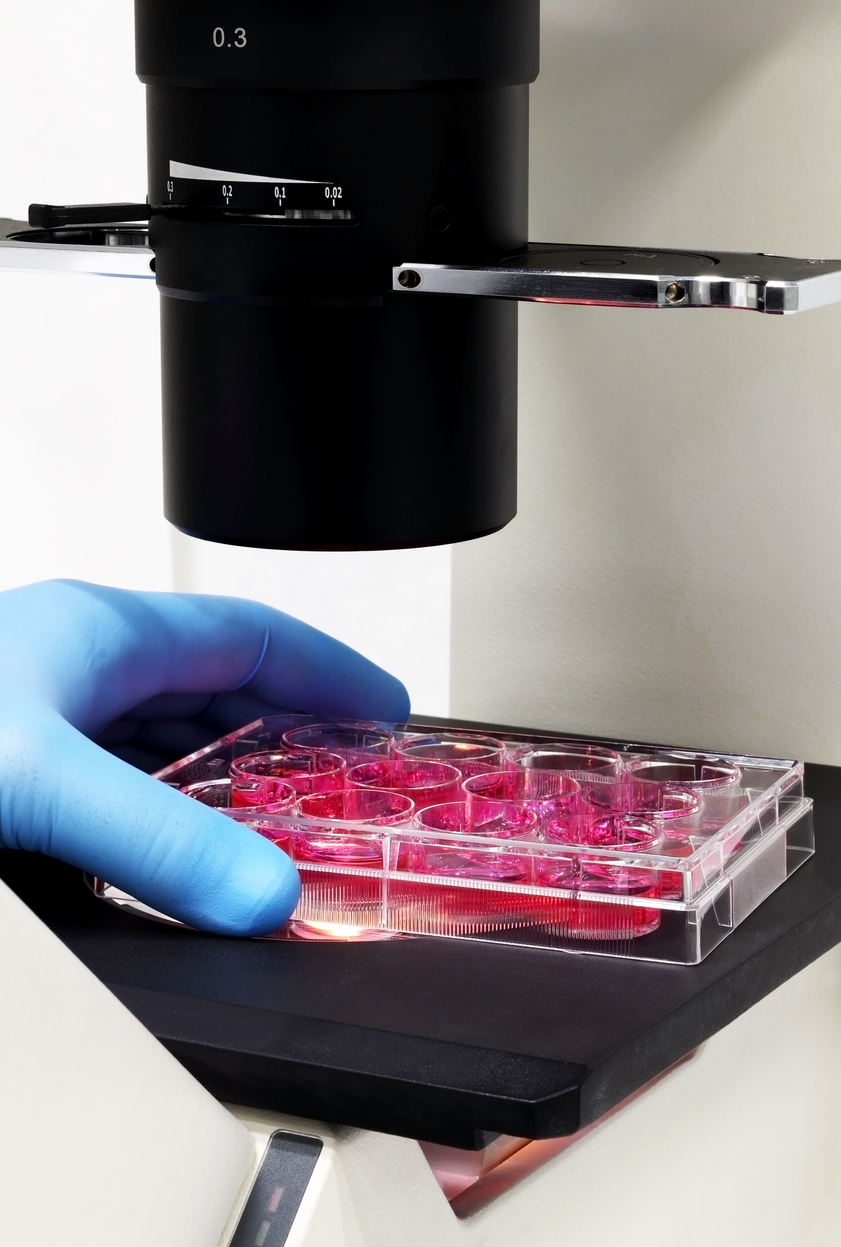Plaque Reduction Neutralization Tests (PRNT) and the Development of New Antiviral Drugs
The PRNT measures the capacity of a sample to neutralize viral activity. In this assay, cells which are known to be susceptible to infection by the virus of interest are cultured in a monolayer on a multi-well plate. A fixed amount of the virus and a series of dilutions of the sample being tested are added together across the plate with one dilution per well. This is referred to as a titration of the sample. After a brief incubation to allow any active viral particles to adsorb onto the monolayer, an agarose overlay is added to limit further spread of the virus to adjacent cells during the remaining part of the assay. After an additional incubation that is typically several days in length, the plates are visualized to determine the number of plaques present in each well. A plaque represents a cluster of cells that are infected by the virus. For a lytic virus, this is visualized as a hole in the cell monolayer. For a non-lytic virus, this can be enumerating foci of cells containing fluorescently labeled virus.
The data generated in this assay is used to calculate the PRNT50 of a sample. This value is the dilution or titer of the sample which reduces the number of plaques formed, when compared to control wells with only virus, by 50%. For antiviral therapeutics such as monoclonal antibodies, the PRNT50 provides key information which can help inform the appropriate dose of the therapeutic that would be required to provide in vivo protection against the virus. In this same context, the PRNT assay can be used to screen candidate antivirals to determine their potential as future therapeutics. PRNT can also be used as a clinical readout of a treatment’s efficacy. For instance, a particular drug or vaccine could be used to stimulate virus-specific antibody production by the immune system of a patient. For this, serum samples would be collected after treatment and tested in the PRNT to determine whether an appropriate antibody titer had been induced which would protect against the virus without affecting the safety of the patient.
PRNT is considered the gold standard for measurement of antiviral antibodies which neutralize viruses. It is more sensitive than many other testing protocols, such as ELISA or hemagglutination, and provides a high level of specificity. At BioAgilytix, we offer PRNT in conjunction with a full suite of virological endpoints needed to support a robust infectious disease therapeutic program.
References:
- https://www.liebertpub.com/doi/abs/10.1089/vim.2008.0007
- https://www.mdpi.com/1999-4915/14/2/410/htm
- https://www.sciencedirect.com/science/article/abs/pii/0166354289900326
- https://www.nature.com/articles/s41596-021-00536-y
Partner With BioAgilytix
BioAgilytix provides biomarker, immunogenicity, cell-based assay, and other laboratory services for pharma and biotech companies around the world. We are a leader in immunogenicity testing, an important step in drug development, evaluating anti-drug antibodies prior to treatment, and analyzing drug efficacy in a patient over time. Contact BioAgilytix today with any questions or requests.
